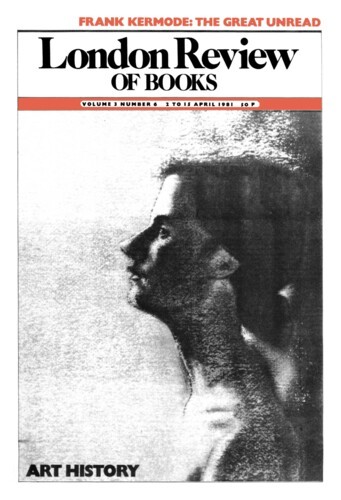Blake at work
David Bindman, 2 April 1981
While engravers in the 18th century were not regarded as quite as mad as hatters, they carried with them the taint of eccentricity and religious enthusiasm. Among the London engravers of his time, Blake was not alone in believing that the last Judgment was nigh, and that the French Revolution was the fulfilment of the prophecy of Revelation. One example is William Sharp, known alike for his skill as an engraver and his extreme credulity. Even Blake was sceptical of his fervent devotion to Richard Brothers, the self-appointed Prince of the Hebrews and Nephew of the Almighty, and to Joanna Southcott, the putative mother of the Messiah. None of this affected Sharp’s career, nor his ability to turn out masterly reproductive engravings of the best masters of his time. Those who remarked on this found a ready explanation: the sheer monotony of the job of engraving, and the need to pore over a small piece of copper all day, meant that the mind could wander freely and would find no check to its uninformed speculations. A contemporary explained: ‘In engraving and its operation the process of thought may be carried on with that of the work, and neither be retarded in its progress, by one who is master of his subject in either way. Hence the wild and fanciful theories that emanate from a well stored and imaginative mind.’ Because Blake made his living throughout his life as a reproductive engraver, his rational contemporaries could easily stereotype him as another Sharp. The almost universal reference to him as ‘Mr Blake the engraver’ carried with it an unmistakable air of condescension.

